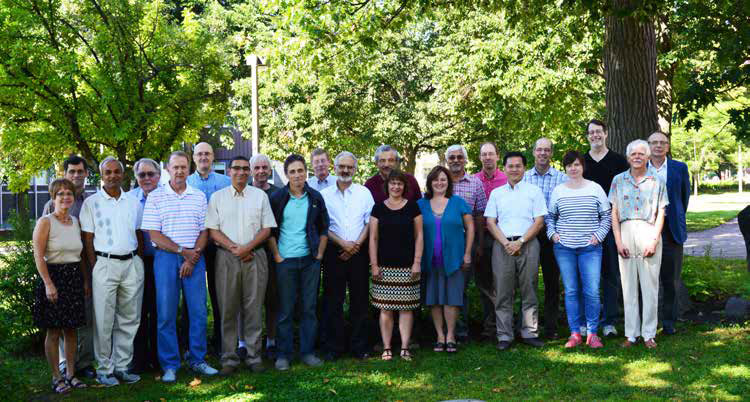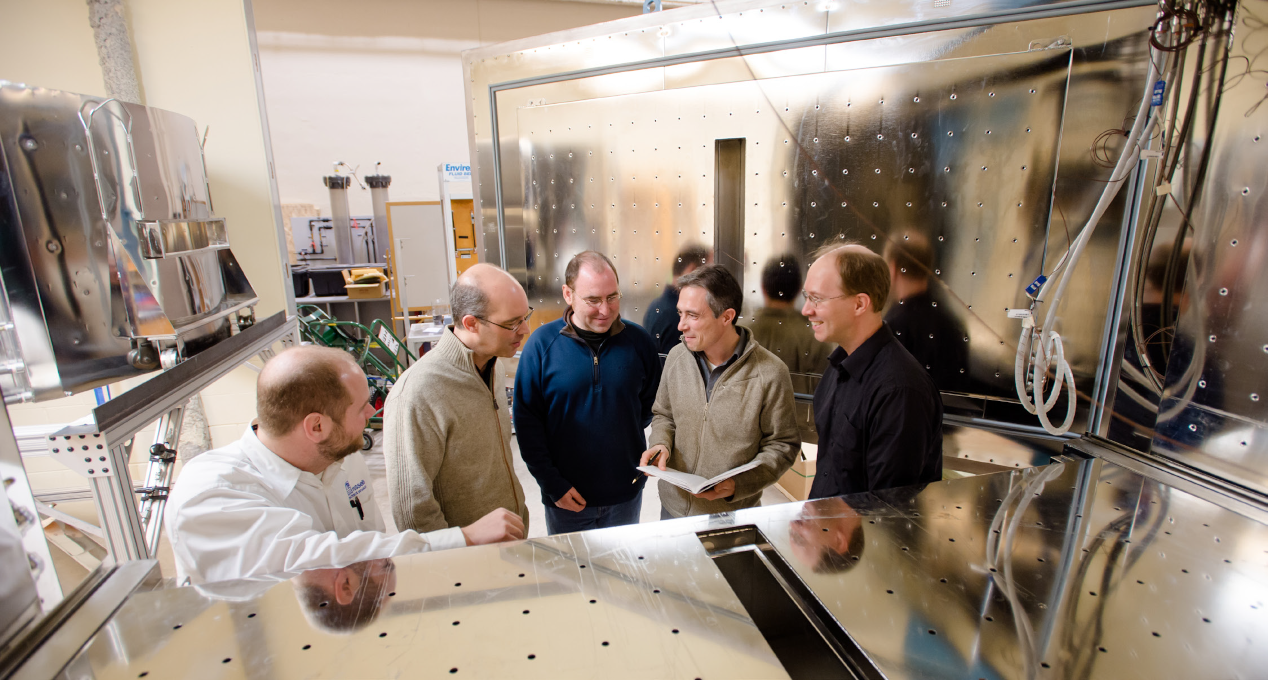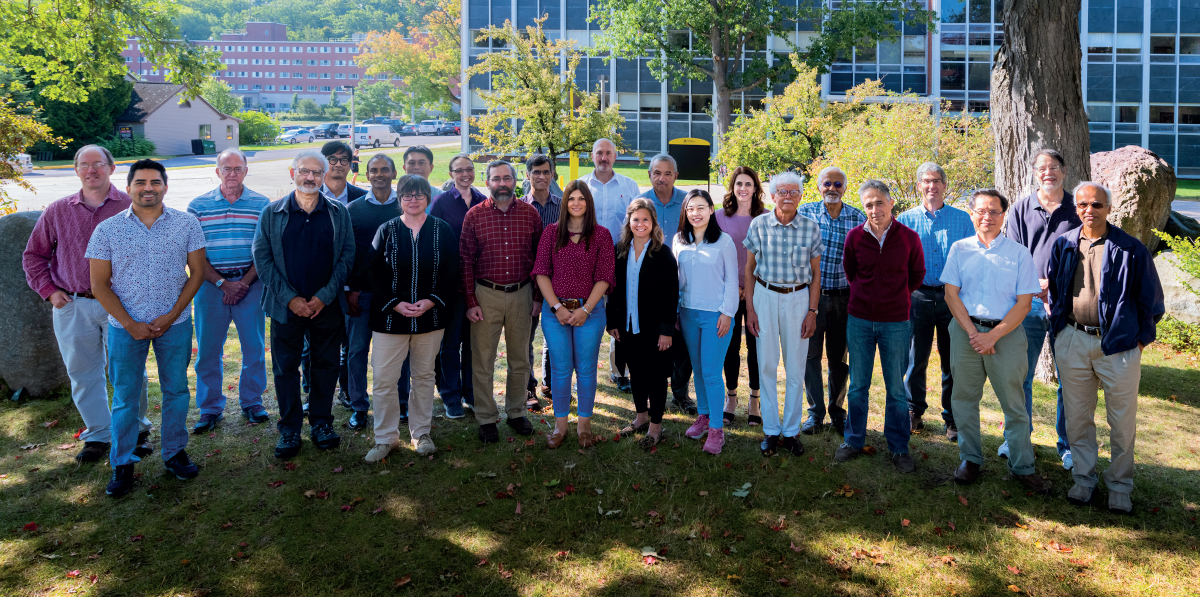
Growth and Diversification
As the physics department moved into a new century, research and teaching expanded and diversified. Technology and computational power influenced the activities of the faculty and changed the opportunities for students. Research activities branched out into new fields, and the department attracted a diverse faculty from around the world. Fellowships from APS, The Optical Society, as well as Michigan Tech teaching, research, and service awards recognized the growth of the department.
The first two decades of the 2000s saw changes in the department, but consistent leadership under Professor Ravi Pandey, who took over as chair in 2001. The undergraduate program nearly doubled in size, and the graduate programs also grew by about half. The expansion of undergraduate research became a particular point of pride, with grants to fund undergraduate summer research becoming more available.
Teaching efforts in the department continued to evolve through the years. Physics lecturer Michael Meyer became director of the new Center for Teaching and Learning in 2012. That same year, the department also introduced a new BA degree in physics. During 2016, the Engineering Physics program was retired and replaced with a new PhD program in applied physics. Technology became more commonplace in the classroom over the 2000s, with an emphasis on multimedia teaching and blended learning. This culminated in spring 2020 during the COVID-19 pandemic, which required instruction to temporarily move entirely online. New classes were developed including Methods of Teaching Physics, Light and Photonic Materials, and Particle Astrophysics. Development of a course on the physics behind music led to the publication of Professor Bryan Suits' textbook The Physics Behind Music in 2023, only 3 years after his previous textbook Electronics for Physicists: An Introduction.
Research activities centered around five distinct groups: Atmospheric Science, Astrophysics, Computational Physics, Experimental Materials, and Atomic and Molecular Physics. Research funding grew to around $1.5 million per year. At the turn of the new century, materials physics attracted the most funding, though atmospheric science grew to bring in the most funding as the program expanded.
Atmospheric research grew significantly during the 2000s, leading to the development of a new, interdisciplinary Atmospheric Sciences PhD program in 2007. Then in 2011, the department expanded research capabilities with the installation of the Pi Cloud Chamber, the world’s largest cloud chamber, with an internal volume of 3.14 m3. The group welcomed new faculty Claudio Mazzoleni in 2008 and Kartik Iyer in 2020, while Professor Will Cantrell took over as Dean of the Graduate School in that same year.

The department's research into the cosmos built important collaborations with international observatories, notably thePierre Auger Observatory,which was constructed between 2004 and 2008. Professors Brian Fick, who joined the department in 2004, and David Nitz were among its founding members and championed its search for evidence of the highest energy cosmic rays and active galactic nuclei. In 2008, Petra Huentemeyer joined the department and built ties with the HAWC gamma ray observatory. During that same year, a new remote sensing institute, EPSSI, was established for studies of the Earth, planetary, and space sciences. EPPSI created additional collaboration between the astrophysics and atmospheric science groups, along with interdisciplinary ties with 7 other departments on campus. Professor Robert Nemiroff's outreach and education site APOD - the astronomy picture of the day maintained its status as one of the most enduring pages on the internet, celebrating its 25th anniversary in 2020.
Computational physics benefited from the rapid growth in computer power during the 2000s. New supercomputer facilities were established in 2014 in the High-Performance Computing Shared Facility, with physics PhD alumnus Gowtham as director. Cosmologist Elena Giusarma joined the department in 2019 with a focus on machine learning and predictive modeling. In 2021 new graduate certificate programs were introduced, including one in Advanced Computational Physics.
"The biggest changes I have seen in the Physics Department over the 25 years have been the amount of research being done in the Department. In addition to maintaining its good teaching performance, the Department has become nationally recognized in several research areas. Secondly, I would mention the improvement in computing facilities over this same period. Going from a single slow mainframe computer to a large number of distributed workstations, PCs, and clusters of PCs. MTU has been quite responsive in adapting itself to computational innovations which are both efficient and inexpensive."
Nanoscience and experimental materials as a field grew in the public consciousness during the 2000s. Ranjit Pati joined the department in 2004 studying quantum materials, one year before the creation of a nanoscience minor in 2005. During 2010, the Seaman Mineral Museum relocated to a new facility, with Dr. John Jaszczak as adjunct curator; in 2020 Jaszczak would take over as full curator of the museum. 2017 brought Dr Issei Nakamura to the department, and in that same year Professor Yoke Khin Yap's research in functional materials spun off an NSF funded startup, Stabilux Biosciences.
In 2010, Professor Donald Beck was recognized for garnering continuous NSF support since 1981 for his research in computational atomic physics. In 2015 the Henes Center for Quantum Phenomena was established after generous donations by Elizabeth and Richard (ME, '48) Henes. Center director Jacek Borysow used a simple mousetrap to help illustrate quantum phenomena in a visit before the donation. The CQP promotes research and teaching activities, has supported educational experiences for undergraduates, like a 2018 trip to CERN in Switzerland, and sponsors the Elizabeth Henes Award for most outstanding undergraduate woman, established in 2022. The department welcomed Ramy El-Ganainy in 2013 and Jae Yong Suh in 2014.
Outside the lab and classrooms, students made the most of their time at Michigan Tech. A new Women in Physics Organization was created in 2014. In 2017, the Society of Physics Students chapter was recognized for its achievement of maintaining a distinguished or outstanding chapter for 9 consecutive years.
